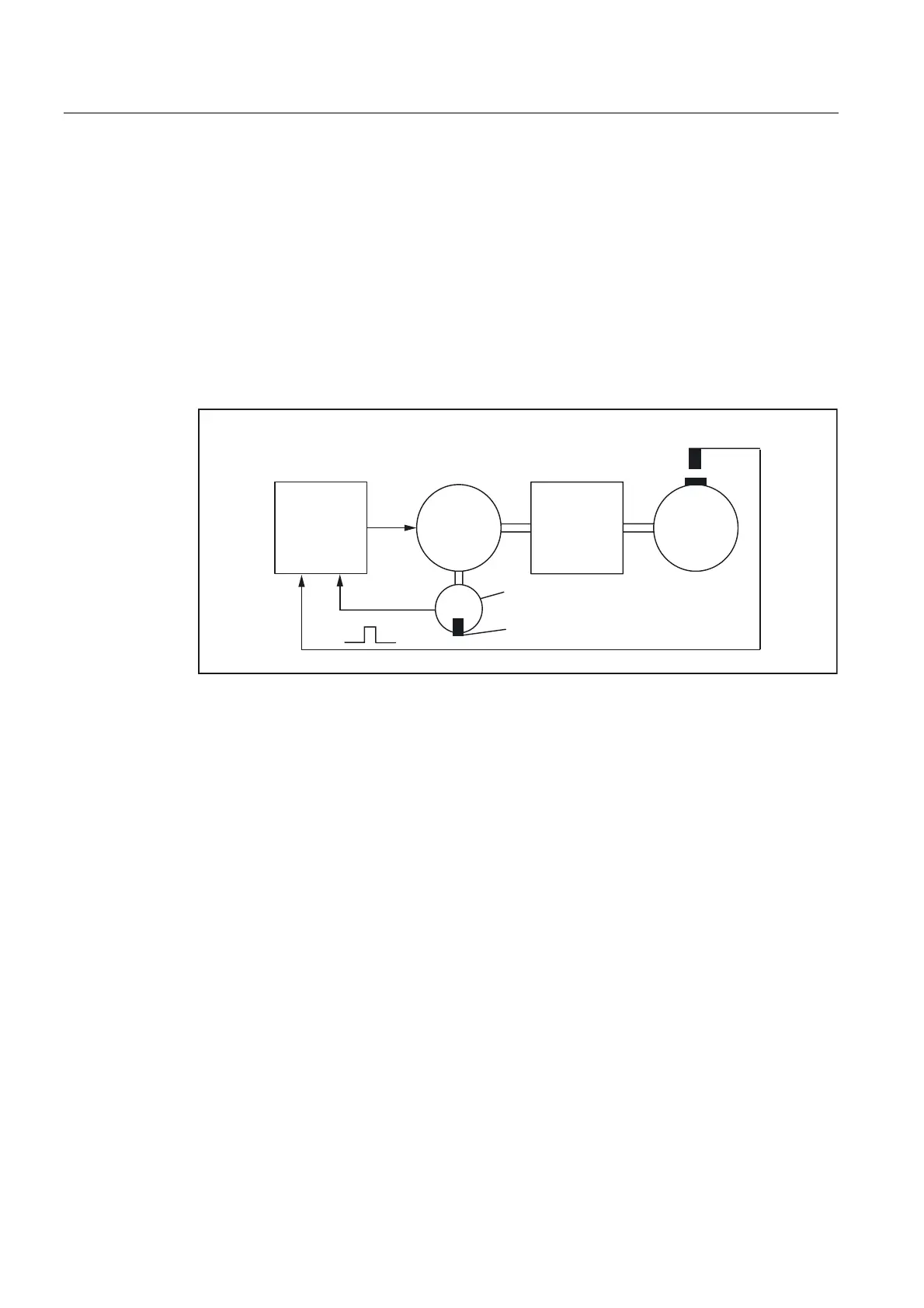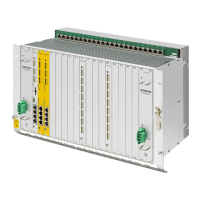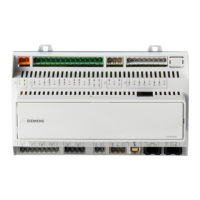Detailed description
2.9 Zero mark selection with BERO
Basic logic functions: Reference Point Approach (R1)
54 Function Manual, 11/2006, 6FC5397-0BP10-2BA0
2.9 Zero mark selection with BERO
Function
Referencing of incremental measuring systems is based on the unique position of the
encoder zero mark relative to the overall traversing range of the machine axis. If several
encoder zero marks are detected in the traversing range of the machine axis due to
machine-specific factors, e.g., reduction gear between encoder and load, a BERO must be
mounted on the machine and connected to the relevant drive module (SIMODRIVE 611D)
via a BERO input in order to uniquely specify the reference point. The position of the
reference point is then derived from the combination of BERO signal and encoder zero mark.
'ULYH
3RVLWLRQ
0RWRU
*HDU
/RDG
6SLQGOH
0HDVXULQJV\VWHP
=HURPDUN
%(52
Figure 2-13 Zero mark selection with BERO
Zero mark evaluation with BERO must be parameterized as the referencing mode:
MD34200 $MA_ENC_REFP_MODE = 5
Negative edge evaluation
In the case of a referencing operation with a negative edge evaluation of the BERO signal:
MD34120 $MA_REFP_BERO_LOW_ACTIVE = FALSE
synchronization is with the next encoder zero mark encountered after the BERO is exited.
Positive edge evaluation
In the case of a referencing operation with a positive edge evaluation of the BERO signal:
MD34120 $MA_REFP_BERO_LOW_ACTIVE = TRUE
synchronization is with the next encoder zero mark encountered after the BERO is
approached.
If, mechanically, the BERO is sized in such a way that the positive BERO signal covers the
entire width of the encoder zero mark, the encoder zero mark will be reliably detected in both
traversing directions.

